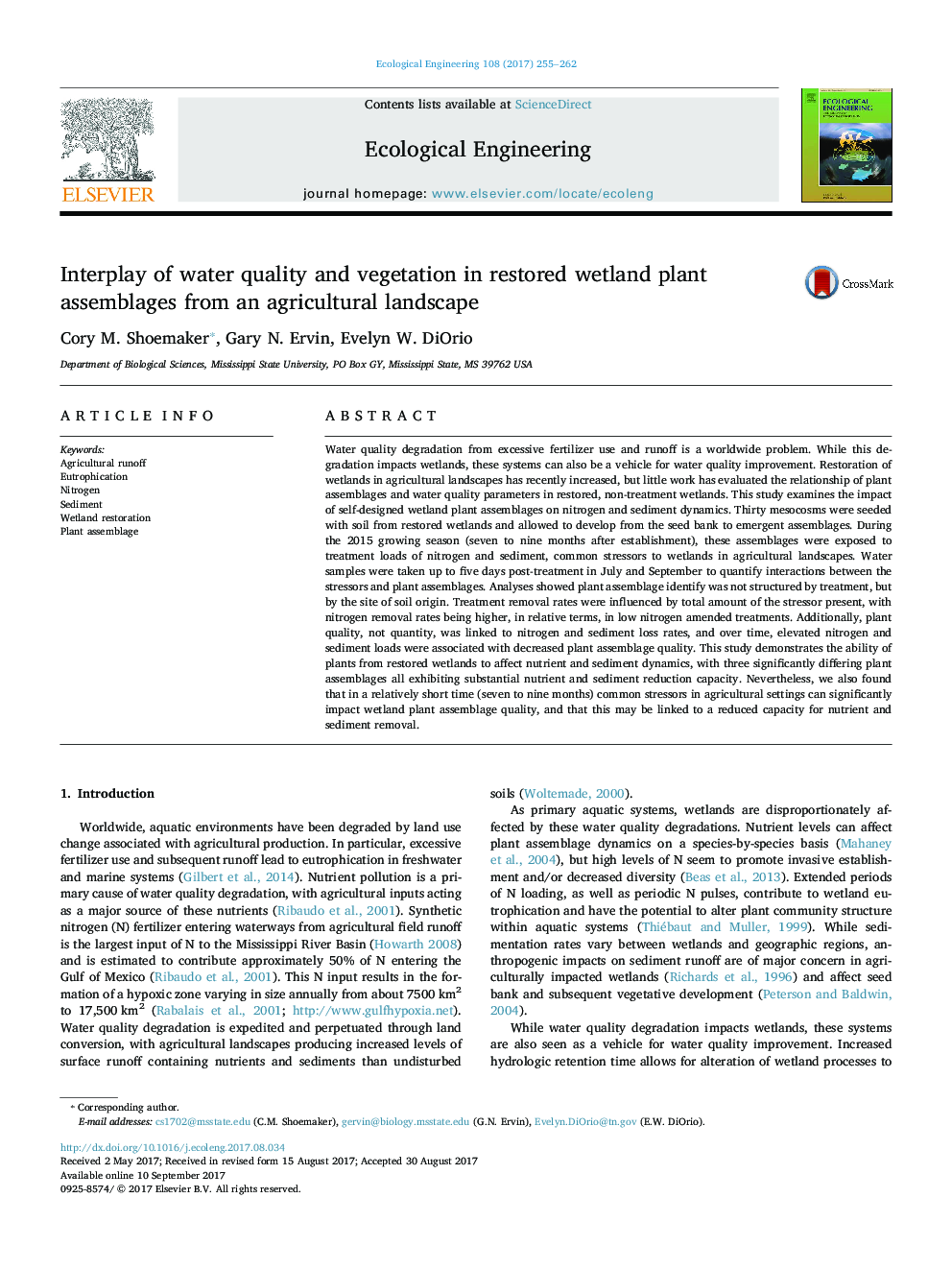| Article ID | Journal | Published Year | Pages | File Type |
|---|---|---|---|---|
| 5743540 | Ecological Engineering | 2017 | 8 Pages |
â¢Analyzed interaction of restored wetland plant assemblages with water quality.â¢Replicated mesocosm experiment treated with nitrogen and sediment loads.â¢Nitrogen and sediment amendments differed in response to, and effect on, plant assemblages.â¢Plant quality, not quantity seemed to be more important in treatment removal rates.â¢Elevated treatment levels decreased assemblage quality within study duration.
Water quality degradation from excessive fertilizer use and runoff is a worldwide problem. While this degradation impacts wetlands, these systems can also be a vehicle for water quality improvement. Restoration of wetlands in agricultural landscapes has recently increased, but little work has evaluated the relationship of plant assemblages and water quality parameters in restored, non-treatment wetlands. This study examines the impact of self-designed wetland plant assemblages on nitrogen and sediment dynamics. Thirty mesocosms were seeded with soil from restored wetlands and allowed to develop from the seed bank to emergent assemblages. During the 2015 growing season (seven to nine months after establishment), these assemblages were exposed to treatment loads of nitrogen and sediment, common stressors to wetlands in agricultural landscapes. Water samples were taken up to five days post-treatment in July and September to quantify interactions between the stressors and plant assemblages. Analyses showed plant assemblage identify was not structured by treatment, but by the site of soil origin. Treatment removal rates were influenced by total amount of the stressor present, with nitrogen removal rates being higher, in relative terms, in low nitrogen amended treatments. Additionally, plant quality, not quantity, was linked to nitrogen and sediment loss rates, and over time, elevated nitrogen and sediment loads were associated with decreased plant assemblage quality. This study demonstrates the ability of plants from restored wetlands to affect nutrient and sediment dynamics, with three significantly differing plant assemblages all exhibiting substantial nutrient and sediment reduction capacity. Nevertheless, we also found that in a relatively short time (seven to nine months) common stressors in agricultural settings can significantly impact wetland plant assemblage quality, and that this may be linked to a reduced capacity for nutrient and sediment removal.
